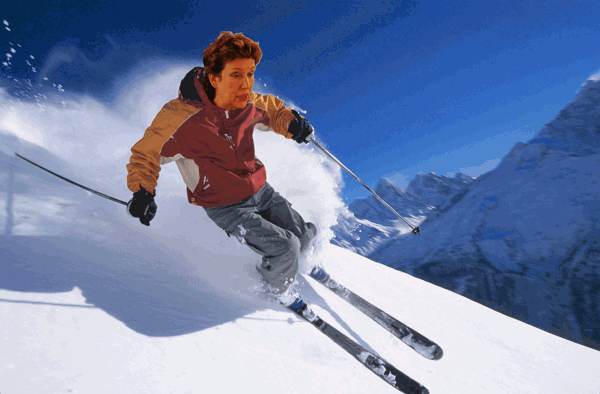Skiing is a sort of creative sport, with action and responses being more instinctive, and skiers challenging themselves to improve their personal records. While there are general do’s and don’ts associated with each sport, there is no one-size-fits-all advice and individuals need some specific feedback to better their own technique.

Here are some common but dangerous pieces of advice, especially for novice skiers, as they desperately try to maintain their balance on the slippery surface.
• Bending forward is safer than standing upright
• Lift the inside ski as professionals do
• Lean back to gain better control
• Plant your pole to negotiate a turn
• Ski with feet together
Forward Bend
Bending forward is simply indicative of a false sense of security and is bound to affect the stance of the skier. While it may serve to increase the downhill speed sending a novice head over heels on the course, it may not really improve the ski-to-snow contact, much needed to control the movement on the terrain.
Riding on One Ski
This technique or trick is better left to the professionals. Stepping into a turn is no longer a must, as modern skis allow faster and accurate turns without much effort. Learners are certainly more stable with both feet on the ground and if need to experiment, then flat terrain is the best option to fall flat and recover.
Leaning Backwards
This posture yet again is a strain on the entire body, as it offers resistance against the forward movement. Leaning backward is bound to send the skier diving nose down at the next turn.
Negotiating Turns
Skiers are often instructed to plant the pole to change the direction of movement, but first-timers usually land up sitting in the opposite direction on following this advice. While applying all their strength to first plant the pole and turn around it, skiers often experience severe twists to their upper bodies that may take some time to get accustomed to.
Skiing with Feet Together
This is another uncomfortable posture that not only affects balance but also causes some extra strain on the body. Skiing coaches, in fact, advise a wide stance to achieve balance or skiing with feet close to each other. This allows skiers to easily shift their weight from one leg to another, depending on the individual’s level of comfort. This certainly cannot be achieved with both foot stuck together!
You guessed it right – such advice usually originates from ever-enthusiastic friends and family members, who do not have the professional capacity to train or give serious skiing suggestions to amateurs. Opt for a formal training course from qualified coaches and skiing professionals, and steer clear of hospitals.
Author: This post was supplied on behalf of Simply Piste, online ski jackets and snowboard clothing store based in the UK.

